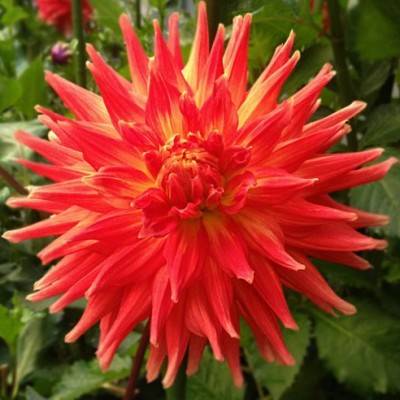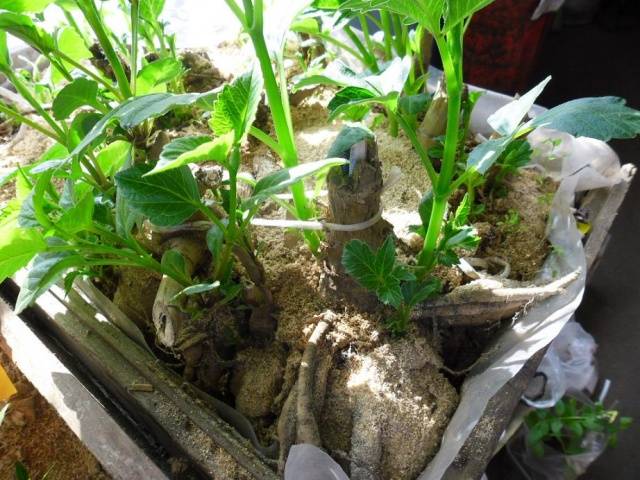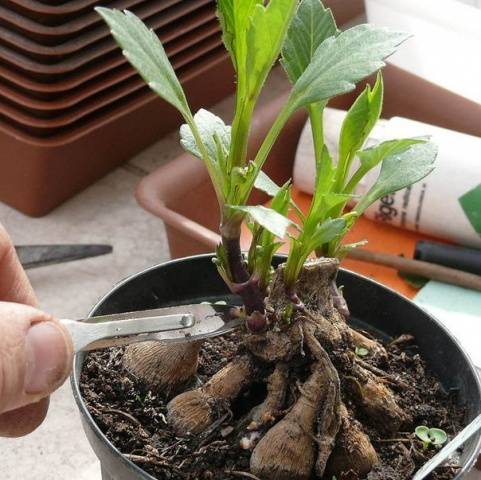Dahlias have been actively grown for several centuries and their popularity, which somewhat decreased in the 90s, is again increasing with unprecedented force. And it’s hard to imagine that flowers so diverse in shape, color and size would be forgotten. There are many classifications of dahlias: by inflorescence size, height, and colors, but the most common is the classification by inflorescence shape. According to this classification alone, about 16 groups of dahlias are distinguished, differing from each other in the shape and size of the inflorescences. Among them, the most famous are fringed, pompom, cactus, anemone, collared, decorative and many others.
Dahlia Martha, which will be discussed in this article, belongs to the semi-cactus group according to the above classification.
Semi-cactus dahlias
This group of dahlias is, as it were, transitional from cactus dahlias To decorative. Their inflorescences also form large caps of layers superimposed on each other, so that they can be called double.
The middle of the inflorescence is more reminiscent of the middle of a decorative group, when small and numerous tubular flowers are tightly pressed against each other and are almost invisible.
The reed flowers surrounding them, commonly called petals, are oval in shape from the base to the middle.But from the middle to the tips, they are just like those of cactus dahlias, rolled into dense tubes that diverge in all directions from the center of the inflorescence.
A fairly large number of dahlias belong to this group.
The diameter of the inflorescence varies, from 10 cm to 20 cm and even more. The height of the bushes of plants in this group also varies greatly, from 50 cm to two meters.
Georgina Martha - description
The dahlia Martha variety was obtained back in 1994 in the USA.
If you look at these flowers from afar, it seems as if fiery red rays are blazing against a background of bright yellow flashes. Taking a closer look, you can understand that the petals of the inflorescences themselves are two-colored - an orange-red hue predominates, which turns into bright yellow at the base of the petals. Moreover, this transition is not gradual, like other colors, but is decorated with rich, elongated strokes. This creates such a unique effect. The petals taper towards the ends into tubes, like rays, and at the very tips they are painted whitish.
The average diameter of flowers is about 22 cm, but the size of individual inflorescences can reach up to 25 cm. Flowering can last from the end of July until frost.
The height of the bush itself is rather average, about 90-100 cm.
Features of care
Since the dahlia is native to the tropical countries of the South American continent, it is a very heat-loving plant. This must be taken into account both when planting it and when caring for it. It is advisable to choose the warmest and sunniest place. Be sure to protect it from strong winds with the wall of the house or high plantings.
Dahlias are not very picky about soil, but for good growth and abundant flowering they need a lot of nutrition. Therefore, sandy soils must be well fertilized before planting dahlias. Loams will be ideal for creating a flower bed of dahlias.
For abundant flowering, the following conditions must be met when planting:
- The dahlia tuber must begin to germinate indoors from about mid-March. Otherwise, the dahlia, being a plant with a long growing season, will bloom very late, in August, or even in September.
- A grown dahlia is planted in a flowerbed somewhere in early June in the middle zone, when all night frosts are a thing of the past. By this time, the tuber should already have several shoots, ranging from 10 to 25 cm in length.
- Before planting, a support for gartering future flowers is well hammered into a hole in the ground before planting.
- After planting a tuber with a lump of earth, it is well watered.
- It is also advisable to thoroughly mulch the ground around the dahlia with straw or sawdust.
- When planted correctly, the neck should be buried several centimeters below the soil level. As the shoots grow, they are tied to a support.
The main thing in caring for dahlias is regular watering and fertilizing. For the latter, it is better to use organic fertilizers.
Since the peduncles of Martha's dahlia are quite long and strong, they can be used for cutting.
Dahlia Martha is a wonderful representative of this large family of tuberous flowers and will give you many pleasant moments admiring it during flowering.













